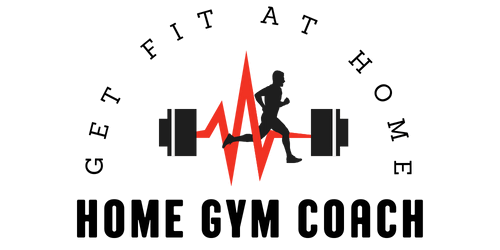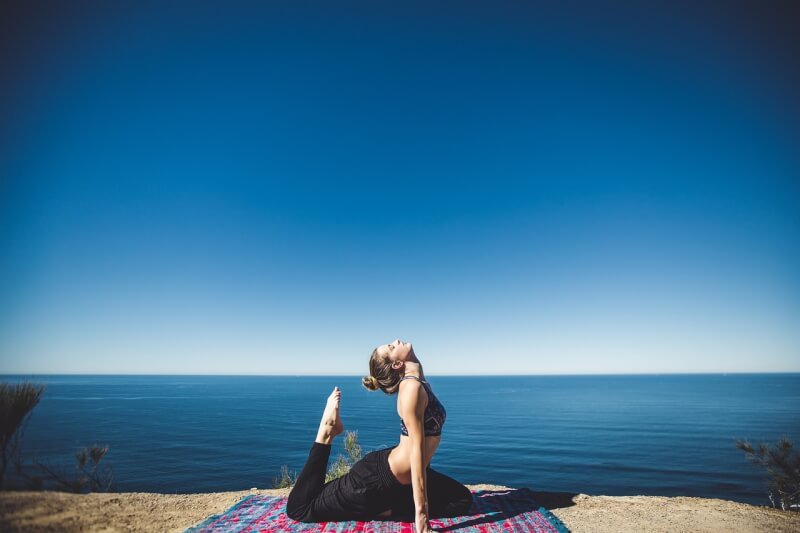Whether you’re a fitness enthusiast or just starting your fitness journey, it’s important to prioritize safety when working out at home. In this article, we’ll explore effective ways for you to prevent injuries while using your home gym. From proper warm-up techniques to using equipment correctly, we’ll provide you with practical tips and strategies to ensure you can enjoy a safe and injury-free workout session in the comfort of your own home. So, let’s dive in and discover how you can keep yourself protected while working towards your fitness goals.

Choosing the Right Equipment
Assessing your fitness level
Before setting up your home gym, it’s important to assess your current fitness level. This will help you determine the type and intensity of exercises that are suitable for you. Consider factors such as your strength, flexibility, and endurance. If you’re a beginner, start with lighter weights and simpler equipment until you build up your fitness level. On the other hand, if you’re more advanced, you may need equipment that can challenge your fitness goals.
Researching and investing in quality equipment
When it comes to equipment for your home gym, quality is key. Investing in well-made and durable equipment will not only provide a better workout experience but also reduce the risk of injuries. Take the time to research different brands and read customer reviews before making a purchase. Look for equipment that is made with high-quality materials, has adjustable settings, and provides proper support and stability.
Ensuring proper setup and maintenance
Once you have chosen the right equipment, it’s essential to set it up correctly. Follow the manufacturer’s instructions for assembly to ensure that everything is secure and stable. Regularly check and maintain your equipment to ensure it remains in good condition. Lubricate any moving parts, tighten loose screws, and inspect for any signs of wear or damage. By properly setting up and maintaining your equipment, you can prevent accidents and injuries during your workouts.
Warming Up and Cooling Down
Importance of warm-up exercises
Before diving into your workout, it’s crucial to warm up your body. Warm-up exercises help increase blood flow to your muscles, raise your body temperature, and prepare your joints for the upcoming physical activity. Engaging in a 5 to 10-minute warm-up routine can help reduce the risk of muscle strains, sprains, and other injuries. Some effective warm-up exercises include jogging in place, jumping jacks, arm circles, and dynamic stretching.
Stretching techniques for injury prevention
Stretching is an integral part of injury prevention. It helps improve flexibility, reduce muscle stiffness, and enhance range of motion. However, it’s important to distinguish between static and dynamic stretching. Static stretching, where you hold a stretch for an extended period, is better suited for after your workout. Before your workout, focus on dynamic stretches, which involve controlled movements that mimic the activities you will be doing during your workout. This helps warm up the specific muscles and joints you will be using.
Cooling down exercises
After completing your workout, take the time to cool down properly. Cooling down allows your heart rate and breathing to gradually return to normal and helps prevent dizziness and lightheadedness. Incorporate gentle movements and stretches to help release tension in your muscles and promote recovery. Walking or light jogging, followed by static stretching, can help alleviate muscle soreness and stiffness. Cooling down properly also reduces the risk of post-workout muscle cramps and promotes a faster recovery.

Using Correct Form and Technique
Learning proper form and technique
Using correct form and technique while exercising is essential for injury prevention. Good form helps you engage the targeted muscles effectively and efficiently, reducing the strain on your joints and other supporting structures. Take the time to learn the proper form for each exercise by studying online resources or working with a qualified fitness professional. Focus on maintaining proper alignment, engaging the correct muscles, and avoiding any compensatory movements that can lead to injuries.
Seeking professional guidance
If you’re new to working out or unsure about proper form and technique, seeking professional guidance is highly recommended. A certified personal trainer can provide personalized guidance, tailored workout programs, and hands-on instruction to ensure you perform exercises correctly and safely. They can also help you progress your workouts gradually and provide modifications based on your fitness level and any specific limitations or injuries you may have. Investing in professional guidance is an investment in your safety and long-term fitness success.
Listening to your body
No one knows your body better than you do. Pay attention to any unusual sensations or pain during your workouts. If something doesn’t feel right, stop immediately and assess the situation. Pushing through pain or discomfort can lead to further injury. Remember that fitness is a journey, and it’s always better to take a step back and address any issues before they become more serious. Trust your instincts and make adjustments to your workouts if needed to ensure your safety.
Progressing Gradually
Avoiding overexertion and excessive weights
It can be tempting to push yourself to the limit and lift heavy weights right from the start. However, this approach can lead to overexertion and increase the risk of injury. Gradually increase the intensity and weights over time, allowing your muscles and joints to adapt. Start with lighter weights and focus on proper form and technique before progressing to heavier loads. This progressive approach ensures that your body can handle the increased demands, reducing the risk of strain, sprains, and other injuries.
Following a structured workout plan
Having a structured workout plan is key to preventing injuries and achieving your fitness goals. A well-designed program will incorporate a balanced combination of strength training, cardiovascular exercises, and flexibility work. It should also include rest days to allow your body to recover and prevent overtraining. Consider consulting a fitness professional to help create a customized workout plan that matches your fitness level, goals, and any specific considerations, such as previous injuries or medical conditions.
Tracking and monitoring progress
Tracking your progress is not only motivating but also helps you identify any potential issues or areas of improvement. Keep a workout journal or use a fitness tracking app to record your exercises, weights, repetitions, and any relevant notes. This allows you to monitor your progress over time and make adjustments as needed. If you notice any plateaus or recurring issues, such as pain or discomfort, discuss them with your fitness professional to address them proactively and prevent injuries.

Appropriate Attire and Footwear
Wearing comfortable and supportive attire
Choosing the right attire for your workouts can significantly impact your safety and performance. Opt for comfortable, breathable, and moisture-wicking fabrics that allow for a full range of motion. Avoid clothing that is too tight or restrictive, as it can impede your movement and increase the risk of injury. Invest in workout clothes that provide proper support to your muscles and joints, such as sports bras and compression sleeves. Wearing the right attire will help you feel more comfortable during your workouts and reduce the likelihood of accidents or injuries.
Choosing appropriate footwear
Your choice of footwear can make a big difference in preventing foot, ankle, and leg injuries. Select athletic shoes that are specifically designed for your chosen type of exercise. Running shoes, for example, provide cushioning and support for high-impact activities, while cross-training shoes offer stability and lateral support for multidirectional movements. Make sure your shoes fit properly and provide adequate arch support to minimize the risk of common injuries, such as plantar fasciitis or shin splints.
Using safety accessories
In some cases, additional safety accessories may be necessary to protect certain parts of your body during workouts. Examples include weightlifting gloves, wrist wraps, knee sleeves, and ankle braces. These accessories can provide extra support, stability, and protection to vulnerable areas, reducing the risk of strains or sprains. Consult with a fitness professional to determine if any safety accessories are appropriate for your specific circumstances and exercises you will be performing in your home gym.
Ensuring Proper Lighting and Ventilation
Adequate lighting for visibility
Proper lighting is crucial in your home gym to ensure visibility and reduce the risk of accidents. Make sure the area is well-lit, especially if you’re working out in the early morning, late evening, or in a windowless space. Place additional light sources strategically to eliminate shadows and create an evenly lit environment. This will help you see your surroundings, equipment, and movements more clearly, reducing the risk of tripping, falling, or using equipment improperly.
Proper ventilation to prevent overheating
A well-ventilated workout space is essential to prevent overheating and ensure a comfortable environment. Good airflow helps regulate your body temperature, allowing you to work out more effectively and reduce the risk of heat-related illnesses. If possible, open windows or doors to allow fresh air circulation. Consider using fans or air conditioning to maintain a cool and comfortable temperature. Stay hydrated and take breaks as needed, especially during intense workouts or in hot and humid conditions.
Eliminating hazards and obstacles
Before you start your workout, take a few minutes to assess your home gym for any hazards or obstacles. Clear away any clutter, objects, or trip hazards that could cause accidents or injuries. Make sure the area is free from loose cables, rugs, or uneven surfaces that could lead to slips or falls. Keep children, pets, and other distractions away from your workout space to ensure a safe and focused environment. By eliminating potential hazards, you can minimize the risk of accidents and better enjoy your workout sessions.
Setting Up a Safe and Clean Environment
Clearing clutter and obstructions
A clutter-free workout space is essential for both safety and focus. Remove any unnecessary items that may create obstructions or distractions during your workouts. Store equipment and accessories properly in designated areas to prevent tripping hazards. Keep the floor clear of any objects, ensuring a clean and open space for your exercises. By maintaining a clutter-free environment, you can move freely and perform exercises without the risk of accidents or injuries.
Securing loose items and equipment
Loose items or equipment can pose a safety hazard during your workouts. Take the time to secure any loose weights, resistance bands, or other equipment to prevent them from falling or causing accidents. Consider using hooks, racks, or storage solutions to keep everything organized and secure. Check the stability of any equipment or structures, such as pull-up bars or weight benches, to ensure they are properly assembled and won’t topple or collapse during use.
Maintaining a clean and organized space
A clean and organized home gym not only promotes a pleasant workout experience but also reduces the risk of injuries. Regularly clean your equipment and accessories to remove sweat and dirt buildup, which can make them slippery or less effective. Wipe down surfaces and mats to prevent the growth of bacteria or mold. Keep towels nearby for quick cleanups or to place on benches or mats for added hygiene. A clean and organized space creates a positive and safe environment for your workouts.
Taking Breaks and Rest Days
Importance of rest and recovery
Rest and recovery are integral parts of any fitness routine. While staying active is important, it’s equally crucial to prioritize adequate rest. Your body needs time to recover and repair after intense workouts. Overtraining or neglecting rest days can lead to fatigue, decreased performance, and an increased risk of injuries. Make sure to include rest days in your workout schedule to give your muscles, joints, and central nervous system ample time to rest and recharge.
Incorporating rest days into your workout routine
The frequency of rest days will depend on your individual fitness level, goals, and the intensity of your workouts. Aim for at least one to two rest days per week. On these days, refrain from intense exercises and focus on gentle activities such as walking, stretching, or engaging in low-impact exercises. Alternating between different muscle groups or workout modalities can also help give specific areas of the body the rest they need. By incorporating rest days strategically, you can maintain a balanced routine and reduce the risk of overuse injuries.
Listening to your body’s signals
Your body has a way of communicating its needs through various signals, such as fatigue, soreness, or pain. It’s important to listen to these signals and respond accordingly. If you’re feeling excessively fatigued, experiencing persistent muscle soreness, or noticing any pain or discomfort that doesn’t improve with rest, it’s essential to take a break and consult with a healthcare professional. Ignoring these signals and pushing through can lead to further injuries and setbacks. By listening to your body’s needs, you can prevent injuries and promote long-term fitness and well-being.
Hydrating and Fueling your Body
Keeping hydrated during workouts
Proper hydration is crucial for optimal performance and preventing dehydration-related injuries. Drink water before, during, and after your workouts to replenish fluids lost through sweat. The exact amount of water needed varies based on factors such as exercise intensity, duration, and individual sweat rate. As a general guideline, aim to drink at least 8-10 glasses (64-80 ounces) of water daily, with additional hydration during workouts. Listen to your body and drink water whenever you feel thirsty to maintain adequate hydration levels.
Maintaining a balanced diet for energy
In addition to staying hydrated, maintaining a balanced diet is key to fueling your workouts and reducing the risk of injuries. Consume a mix of carbohydrates, proteins, and healthy fats to provide the energy needed for exercise and promote recovery. Focus on whole, nutrient-dense foods such as fruits, vegetables, lean meats, whole grains, and healthy fats. Avoid crash dieting or restrictive eating patterns, as they can lead to nutrient deficiencies and compromise your overall health and performance.
Avoiding excessive caffeine or alcohol intake
While caffeine and alcohol are common in many people’s daily routines, they can negatively impact your workouts and increase the risk of injuries. Excessive caffeine intake can cause dehydration and interfere with sleep patterns, affecting your body’s ability to recover properly. Similarly, alcohol can impair coordination, judgment, and muscle recovery. Limit your consumption of caffeine and avoid alcohol before intense workouts or activities that require focus and coordination. Opt for healthier alternatives, such as herbal teas or infused water, to stay hydrated and energized.
Seeking Professional Medical Advice
Consulting a healthcare professional
Before starting any new fitness regimen, it’s important to consult with a healthcare professional, especially if you have any existing medical conditions or injuries. A doctor can evaluate your overall health, provide guidance on specific activities or exercises to avoid, and identify any underlying issues or risks that may increase your chances of injury. They can also prescribe any necessary medications or therapies to manage existing conditions and ensure your workouts are safe and appropriate for your individual needs.
Getting a physical evaluation
In addition to consulting with a healthcare professional, consider getting a physical evaluation before embarking on a new workout routine, particularly if you’ve been inactive or have had a prolonged break from exercise. A physical evaluation helps assess your physical capabilities, identify any muscular imbalances or limitations, and provide recommendations for exercises or modifications that suit your body’s specific needs. This evaluation can help prevent injuries and ensure you engage in exercises that are suitable for your fitness level and goals.
Addressing any existing injuries or health concerns
If you have any existing injuries or health concerns, it’s crucial to address them before starting a new workout routine. Ignoring underlying issues can exacerbate injuries or lead to new ones. Work with a healthcare professional or physical therapist to develop a plan that accommodates your condition and promotes healing. They can provide specific exercises, modifications, or therapies to help you recover and gradually reintroduce activities. By addressing any existing injuries or health concerns, you can prevent further damage and safely engage in workouts that support your overall well-being.


